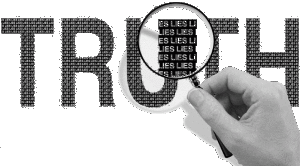Fake Data
Before taking 540 I hadn’t analyzed data since junior high school when we did exercises on data collection and surveying our friends as an introduction to statistics. Over the years, I have hired data science companies to run surveys about attitudes on particular subjects. The guys were awesome. I would explain the problem and the type of data I wanted, I handed them a large check, and poof 6 weeks later I received amazing reports worthy of publishing in science magazines. When it comes to election time and politicians expunge statistics I am always cynical of where the numbers come from and how the data is collected—biased and untrue I tell myself and tune out “fuzzy numbers.”
In December of last year, I read a fascinating article in the Washington Post about how face to face interactions can change people’s minds. It was an astonishingly scientifically backed study published in Science Magazine that proved people’s prejudices can evolve. The implications were far and wide reaching.
In May of this year, while driving down the freeway I was shocked when I heard Ira Glass of NPR say he was devastated to hear the story had been retracted. The graduate student, Michael LaCour that designed and implemented the study had falsified or at least appeared to have falsified data. I was astonished and astounded. However, it wasn’t just me that had been fooled. A series of articles, retractions, and editorials all began to appear the following week.
It all came to light because a group of students from UC Berkeley wanted to replicate the original study. They were not getting the same participant response rates so Qualtrics. Qualtrics did not have a record of the survey or the data from the original study. It all began to unravel after this. Although the original in person interviews were real, the post interview poll results were elaborately falsified. One of the canvassers was astonished to hear about the scandal as he recalled watching the data come in from the surveys. The UC Berkeley students documented the inconsistencies and contacted the senior sponsor of the paper, Donald Green from UCLA. Within two days Green asked for a formal retraction from Science as the LaCour was unable to provide the raw data which the study was based upon.
The moral of the story is when things seem too good to be true, they usually are.
We are in living in a world of data and bad data is a part of it. Journalists have to turn out stories faster and scientists and academics have to publish more to stay relevant. In 2014, 43 articles were retracted from BioMed Central because of falsified peer review data scandal (Washington Post). iThenticate published a yearly blog of top 10 plagiarism cases. There is a watchdog group for plagiarism called Bad Media.
Marketers be warned bad data is lurking, unscrupulous journalists are reporting, and watchdogs are trolling to find your mistakes.
Links to Retracted Study
This American Life
http://www.thisamericanlife.org/blog/2015/05/canvassers-study-in-episode-555-has-been-retracted
New York Times
Science
Retraction Watch
Plagiarism
Washington Post
Mashable
http://mashable.com/2014/05/16/cnn-reporter-fired-plagiarism/
Watchdog Links
Our Bad Media
https://ourbadmedia.wordpress.com/
iThenticate
http://www.ithenticate.com/plagiarism-detection-blog/top-plagiarism-scandals-2014#.VXx95flViko

